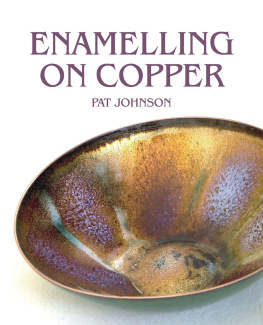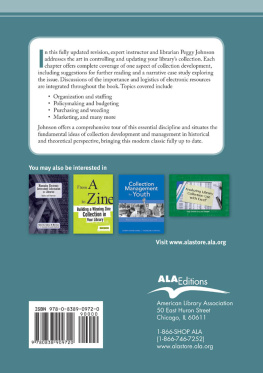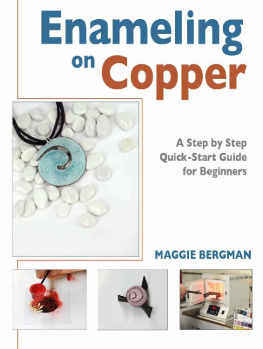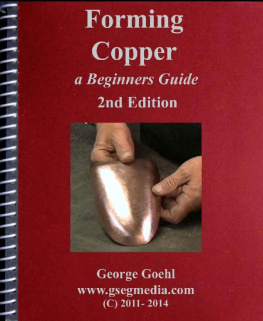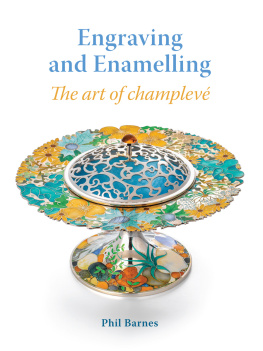Johnson - Enamelling on Copper
Here you can read online Johnson - Enamelling on Copper full text of the book (entire story) in english for free. Download pdf and epub, get meaning, cover and reviews about this ebook. City: Wiltshire, year: 2017, publisher: The Crowood Press, genre: Home and family. Description of the work, (preface) as well as reviews are available. Best literature library LitArk.com created for fans of good reading and offers a wide selection of genres:
Romance novel
Science fiction
Adventure
Detective
Science
History
Home and family
Prose
Art
Politics
Computer
Non-fiction
Religion
Business
Children
Humor
Choose a favorite category and find really read worthwhile books. Enjoy immersion in the world of imagination, feel the emotions of the characters or learn something new for yourself, make an fascinating discovery.
- Book:Enamelling on Copper
- Author:
- Publisher:The Crowood Press
- Genre:
- Year:2017
- City:Wiltshire
- Rating:5 / 5
- Favourites:Add to favourites
- Your mark:
- 100
- 1
- 2
- 3
- 4
- 5
Enamelling on Copper: summary, description and annotation
We offer to read an annotation, description, summary or preface (depends on what the author of the book "Enamelling on Copper" wrote himself). If you haven't found the necessary information about the book — write in the comments, we will try to find it.
Enamelling on Copper — read online for free the complete book (whole text) full work
Below is the text of the book, divided by pages. System saving the place of the last page read, allows you to conveniently read the book "Enamelling on Copper" online for free, without having to search again every time where you left off. Put a bookmark, and you can go to the page where you finished reading at any time.
Font size:
Interval:
Bookmark:
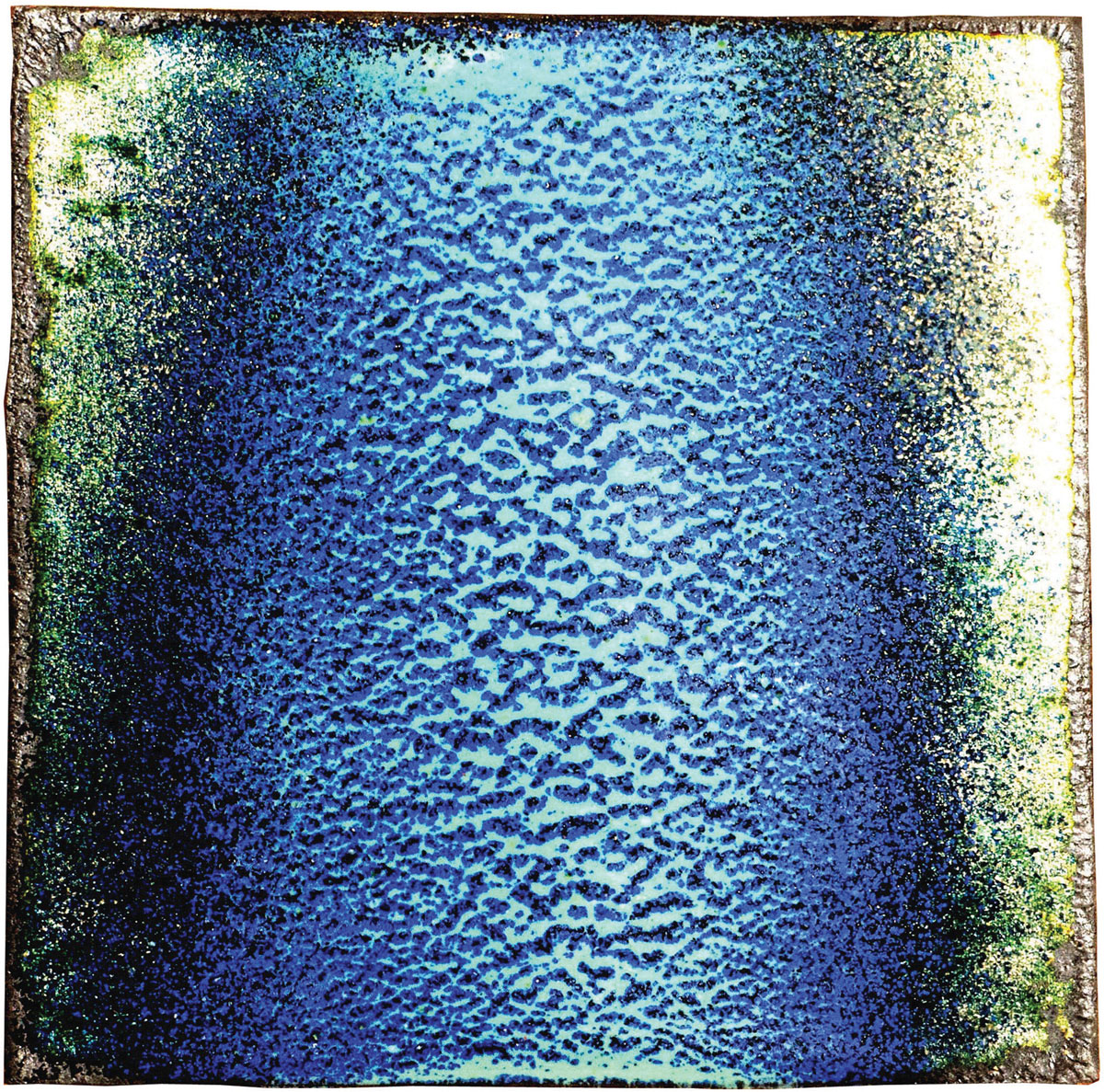
PAT JOHNSON

THE CROWOOD PRESS

Contents

Introduction
In the 1950s, thousands of little enamelling kits were bought by families who wanted to give a gift to their children. Everything necessary was included a little hotplate kiln, a spatula, small flat pieces of copper of various shapes (referred to as blanks) and a collection of ground, coloured glass enamels. Some enamels were said to be transparent, others opaque, each packaged inside a small shaker-tube. I was twelve years old when I received my kit. It was set up on the dining-room table and I tapped some of the enamels onto a few of the blanks and put the blanks on the hotplate. After a minute the enamels melted, successfully covering the copper shape. I looked at the result and decided I did not like enamelling at all.
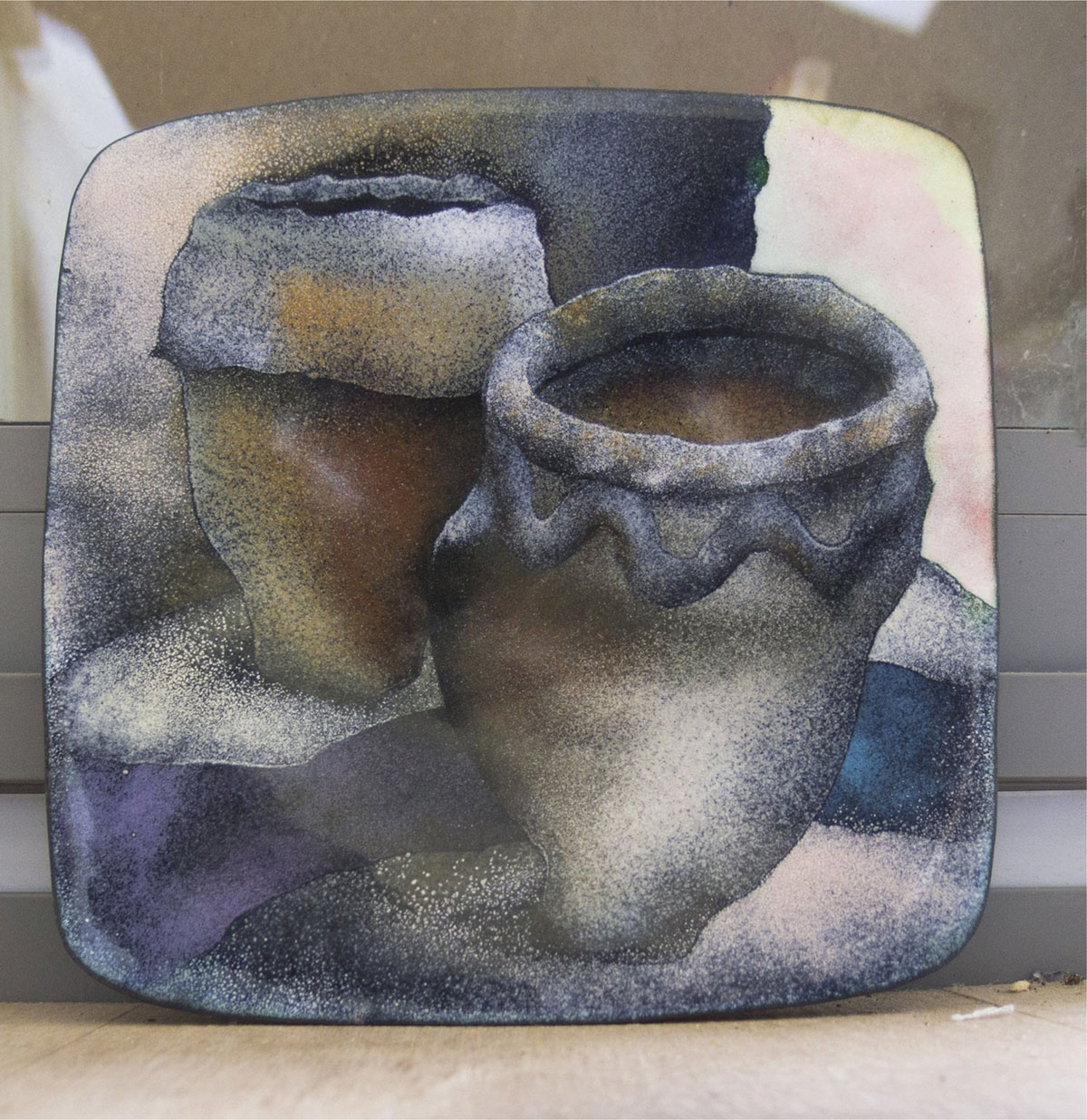
Enamelling these two antique bowls employed all of the techniques described in , with the exception of working with stencils. The build-up of opaque colours to create a sense of volume can be seen, as well as textures created by pushing layers of enamels around. The sharp edges were made with a stick and a brush. The theme of this image is the moment when bowls that have been buried for hundreds, or even thousands, of years emerge into the sunlight.
Years later, I was again given an enamelling kit, exactly the same as the one I had tried out sixteen years earlier. Uninterested in it for myself, I would get the kit out after a dinner party to entertain the guests, some of whom actually made some attractive pieces using simple designs and opaque enamels. The transparent enamels always produced a failure because no one knew that the transparent colours needed to be fired on top of a layer of colourless transparent enamel called flux. All of the guests efforts to use the transparent enamels only resulted in covering the copper with a boring dark brown colour.
Then one day, for some unknown reason, I set up the kiln and sifted a transparent enamel onto a copper blank. Probably the name of the enamel transparent Amber appealed to me and I wanted to give it one more try. After it sat on the hotplate for as long as opaque enamels take to melt, the amber had turned the usual dark brown and I was about to lift it up when the phone rang. I dashed off to answer the call, leaving the amber-covered blank on the hotplate. When I returned ten minutes later, I saw that it had transformed into the most beautiful transparent gold I had ever seen. The sight of it was captivating. I was entranced and have been enamelling ever since.
After that magic moment with the amber, which was effectively an accident (amber is one of the few transparent enamels that does not need to be fired on top of a flux), I was of the opinion that enamelling on copper was very easy to do just a little matter of getting the timing right. It was only after many years of making my own work and teaching enamelling techniques to others that I fully realized just what a difficult and complex medium it is. Successes, like the sudden appearance of the transparent gold, have often come seemingly out of nowhere. The ensuing problem has been first to find out how these successes arrived and, after that, to take up the challenge of reproducing them. I have spent my life trying to repeat the wonderful effects enamelling has shown me.
This book has been written to increase the appreciation of enamelling by describing in detail the challenging behaviours of enamels and the techniques required to master them. In addition, I hope to give assistance to those who want to learn to enamel and experience the many gifts that enamelling has to offer.
Chapter 1 |
WHAT IS ENAMELLING?
Enamelling is the technique of melting coloured glass particles onto a metal surface. The glass particles are known as enamels, the melting process is called firing and in this book, the metal involved is copper. An enamelled picture, bowl or piece of jewellery is often referred to simply as an enamel, the same word as the ground glass. The words piece and work relate to an object that is being and has been enamelled and the copper will be called either a blank or a panel.
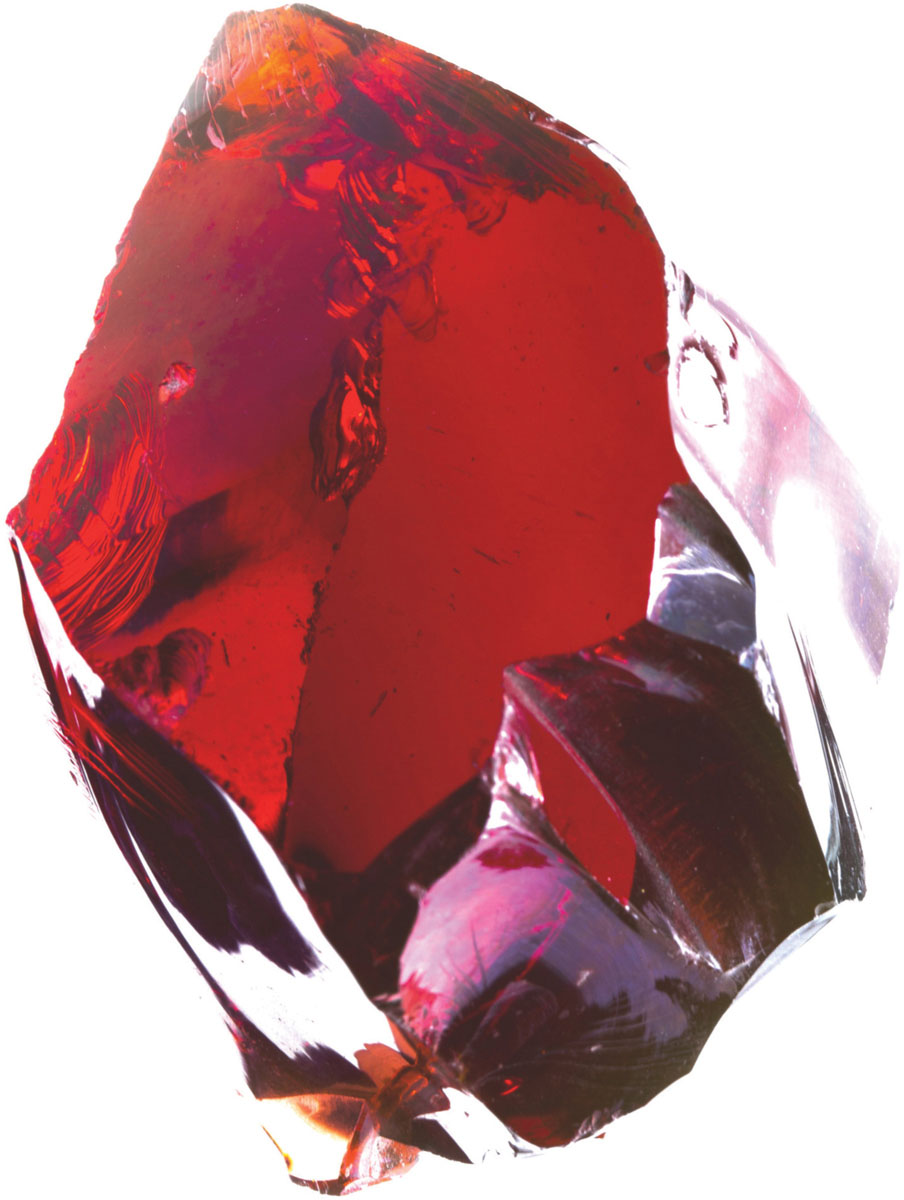
This piece of enamel, just a bit bigger than a golf ball, was broken off the cooled mass that had just come out of a crucible. The mass was roughly pounded until the pieces were small enough to be put in a mill and ground up into fine grains.
About enamels
Enamels are a type of glass made up of minute fragments of rocks and minerals, jostled together with a great deal of sand. When this mixture is put into a crucible and taken up to its melting temperature, the sand melts, and the elements and compounds in the rocks and minerals are released. In the matrix of melted glass they break apart and then, during the cooling process, join up to make new components. The separate particles are gone and in their place is an enamel, a glass that will melt at a specific temperature and that will adhere smoothly to certain metal surfaces. At this stage, the enamel is one large mass, soon to be broken up into pieces of pea-sized lumps or ground into grains.
Enamels come in a wide range of colours and works in enamel are created by applying layers of these colours one after another, with firings in a kiln in between each layer. A firing will melt the glass particles and produce a hard shiny surface.
ENAMEL BEHAVIOURS
Enamelling gold and silver jewellery and vessels is very difficult indeed. Not only are skills and physical effort required to form the metal, the colours of the enamel must be pure and lack surface blemishes. Perfection lies at the heart of this practice, requiring a great deal of time and patience. Precious metal enamellers work with pea-sized lumps, grinding them by hand in distilled water to prevent any kind of contamination. The enamels are applied to a silver or gold object using a brush or feather to put the damp grains in place. This technique requires great care. Once dried, the piece is fired for a short time until enamels melt, after which it is cooled slowly. The glass has become bonded to the metal but apart from this, nothing has happened to change the enamels structure and nothing is revealed about them except their wonderful colour.
Enamelling on copper is a different story. Here, the metalworking technique can be much easier but the actual roles of the enamels are more complex. Most importantly, the copper intermingles with the enamels and this has a profound effect on their colour. In addition, enamels fired on copper are treated in a very different way from those fired on silver or gold. They are sifted on rather than laid down wet and because it is hard to gauge exactly just how much enamel has been applied, the results are not entirely controllable. Unusual effects are regularly created and most of them are so beautiful and interesting that perfection is not required, although with practice and great skill in sifting, it can be achieved.
Font size:
Interval:
Bookmark:
Similar books «Enamelling on Copper»
Look at similar books to Enamelling on Copper. We have selected literature similar in name and meaning in the hope of providing readers with more options to find new, interesting, not yet read works.
Discussion, reviews of the book Enamelling on Copper and just readers' own opinions. Leave your comments, write what you think about the work, its meaning or the main characters. Specify what exactly you liked and what you didn't like, and why you think so.

